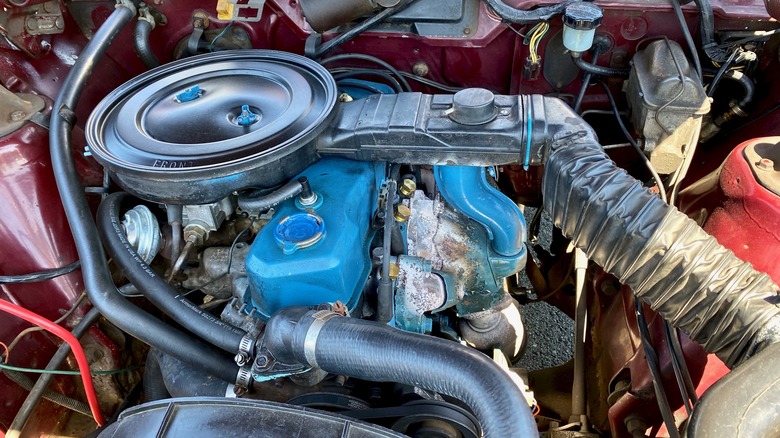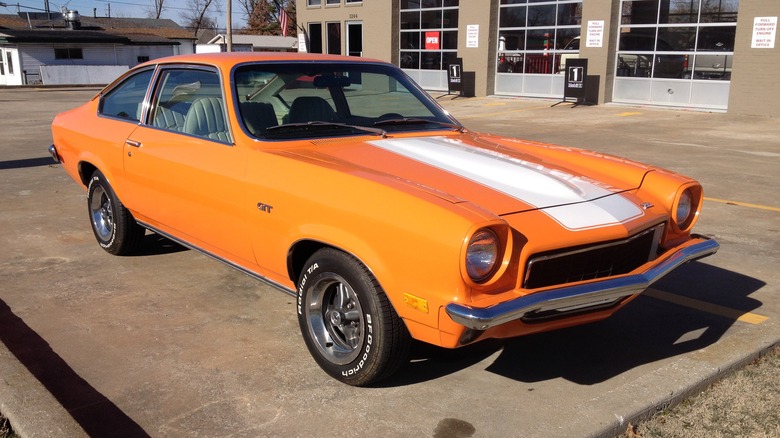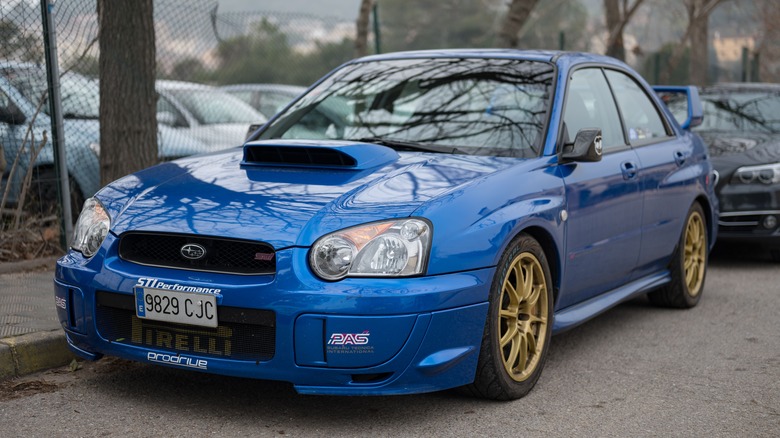Four-cylinder engines have traditionally been praised for providing an excellent combination of fuel efficiency and cost-effectiveness without compromising daily drive quality. However, not all four-cylinder engines meet this expectation. Some have even caused significant issues that tarnished their brands’ images.
prompted massive recalls
, or caused owners to quickly seek out replacement engines at an earlier stage.
Whether it was bold engineering gone wrong or cost-cutting gone too far, the engines in this list serve as cautionary tales. Some were catastrophically unreliable, while others were just misfit solutions that lingered too long on automaker lineups. From GM’s Ecotec failure, which resulted in a class action lawsuit, to Subaru’s beloved but betrayed flat-fours, these engines proved that smaller doesn’t always mean smarter.
This article will explore four of the most problematic four-cylinder engines ever produced, considering their performance flaws, unreliability, and influence on the auto industry. These engines go beyond being merely weak performers; they were sources of frustration for owners due to frequent problems. Steer clear of these troublesome models whenever possible.
Read more:
5 Vehicles That GM Incorrectly Phased Out
Theta II: Hyundai’s Volatile Engine Issue

The Hyundai Theta II engine, specifically the 2.4-liter GDI version, has gained notoriety for negative reasons. This engine type is utilized in numerous models such as the Hyundai Sonata and Kia Optima. However, it suffers from a significant design issue that permits metallic particles to obstruct crucial lubrication pathways within the motor. Consequently, this frequently leads to severe engine breakdowns, typically occurring during high-speed travel with little to no prior indication.
Sadly for Hyundai and its affected customers, the problem was extensive enough to trigger one of the biggest engine-related recalls in automotive history, encompassing approximately 470,000 cars. In 2019, both Hyundai and Kia settled several class-action lawsuits with a substantial agreement. To mitigate further issues, they enhanced warranty coverage and introduced a new knock sensor detection system as an emergency measure; however, this did little to repair their tarnished image by that point.
The Theta II engine developed by Hyundai had two variants: a 2.0-liter and a 2.4-liter version, designed to offer good performance alongside fuel economy for regular use. However, these engines suffered from fundamental flaws in their design. Production began in 2010 at the company’s facility in Alabama, but reports of malfunctions started appearing between 2011 and 2017 across several vehicle models. This problem mainly impacted vehicles like the Hyundai Santa Fe, Tucson, and Sonata as well as the Kia Sorento and Optima Hybrid. The root cause lay in production defects which resulted in engine knockings, stalls, and even total engine breakdowns.
Certain Hyundai motors exhibit greater reliability compared to their counterparts.
So, if you’re thinking about buying a used Hyundai or Kia from this period, it’s important that you thoroughly investigate before making a decision.
GM Iron Duke: The Indestructible Engine That Nobody Asked For

General Motors unveiled the
2.5-liter Iron Duke engine
In the late 1970s, following the oil crises and an increasing demand for vehicles with better fuel efficiency, this engine was developed. Known for its simplicity and robustness, it featured a cast-iron block and cylinder head. This straightforward inline-four produced just 87 horsepower along with 123 pound-feet of torque. Thanks to its solid construction, it became known as a reliable power source, prompting General Motors to incorporate it into various vehicle lines such as the Pontiac Fiero, Chevrolet S-10, and even the Grumman LLV postal delivery vans.
Though the Iron Duke was trustworthy, it was seriously underpowered. Its poor performance was particularly apparent when fitted in cars such as the 1982 Chevrolet Camaro, where its sub-100 horsepower output produced painstakingly slow acceleration. Both consumers and auto reporters criticized this mismatch between engine capability and vehicle expectations. To exacerbate its problems even more, the Iron Duke suffered horribly from excessive noise, vibration, and harshness, compromising the entire driving experience.
The Iron Duke’s impressive fuel efficiency and reliability were achieved at the cost of reduced performance and sophistication. Interestingly, however, these same shortcomings meant the engines could endure for many years on the road due to their low stress and straightforward design.
Chevrolet Vega 2.3L: A Failed Experiment in Innovation

The 2.3-liter inline-four in the Chevrolet Vega stood out as one of the most daring yet calamitous engineering endeavors undertaken by a prominent car manufacturer. General Motors sought to introduce innovation through an aluminum engine block without conventional iron liners. The intention was to reduce both weight and expenses; however, this approach ultimately transformed the Vega into something problematic during its time.
least popular vehicles in General Motors’ past
.
Managing heat with these engines was incredibly challenging. They had a tendency to warp, leak, and consume too much oil. The absence of liners led to rapid wear on the cylinder walls, and overheating frequently occurred due to a flawed cooling design. Not even dedicated GM supporters could ignore how swiftly these engines failed.
The problems with the Vega’s engine not only led to the demise of the vehicle but also symbolized the wider quality concerns affecting General Motors during that period. Even though it had a stylish design and received significant promotional efforts, the Vega—with its notoriously defective engine—found itself featured on numerous “worst-of” compilations. This engine had the potential to be revolutionary, yet it frequently failed—and left many disappointed.
Subaru EJ Series: The Ultimate Head Gasket Champion

Subaru’s EJ-series horizontally-opposed four-cylinder engines propelled several of the company’s iconic cars such as the Impreza, Forester, and Outback. However, these motors gained notoriety due to persistent problems with their head gaskets. Specifically, the EJ25 engine, used across numerous models from the late 1990s into the mid-2000s, suffered frequent failures related to coolant leaks and seal integrity, leading to costly maintenance for vehicle owners who had to address this issue repeatedly.
EJ engine was discontinued
.
The design of the boxer engine itself contributed to the problem. Its horizontal layout and use of cast pistons and rods made it difficult to effectively dissipate heat and exacerbated gasket wear, as well as having bad oil passages for its rod bearings. The failures were so common that independent Subaru specialists built their business around preventative head gasket repairs.
To be fair, these engines offered a great driving experience — a low center of gravity, solid torque, and that unmistakable Subaru thrum. But the long-term ownership experience often included costly fixes well before the 150,000-mile mark. In an era where competitors offered bulletproof engines, Subaru’s EJ showed that performance and reliability can sometimes be the worst enemies. It may have had rally cred, but for everyday owners, it was a financial pothole.
Looking for the newest in technology and automotive developments?
Sign up for our complimentary e-newsletter.
For the most recent news stories, detailed guides, and practical advice, delivered once per email.
Read the
original article on
.




